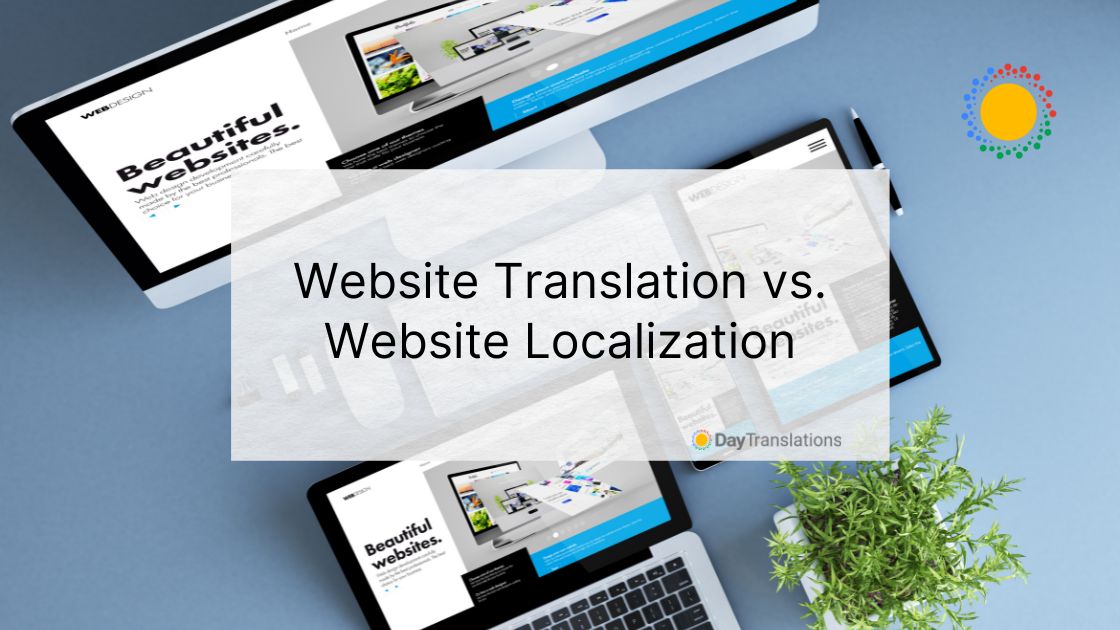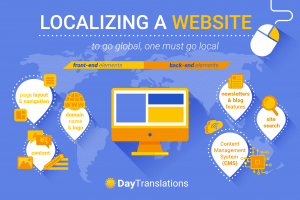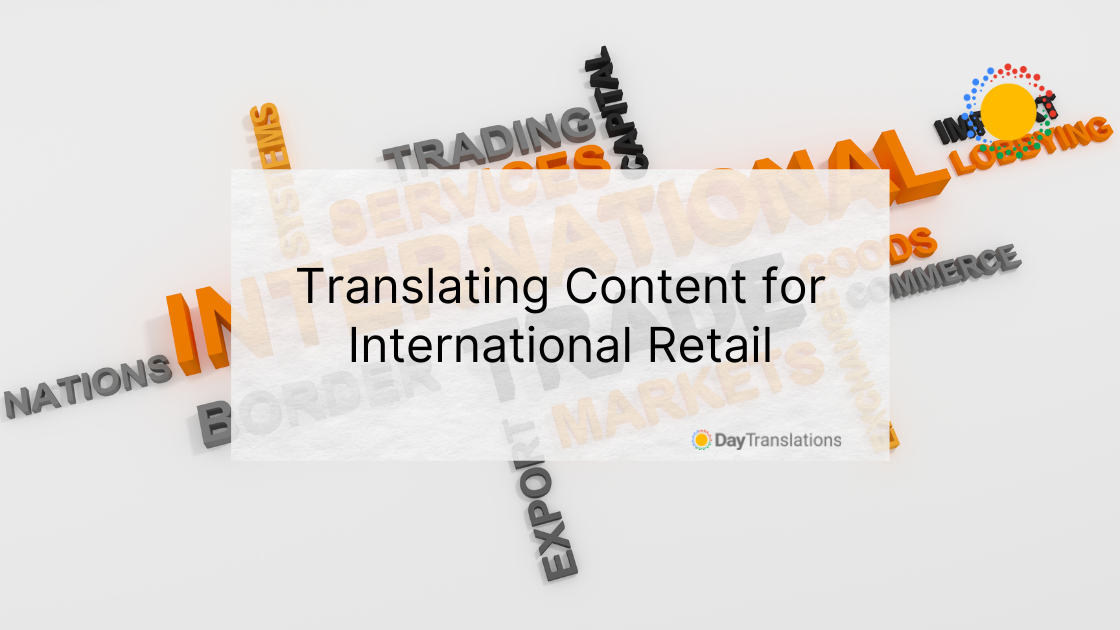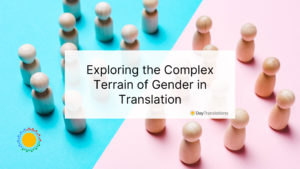This article is part of our Complete Guide to Localization, check it out for a more comprehensive approach to this practice.
___________________________________________________________
Maybe it’s because they are industry terms that many clients believe that website localization and website translation are similar services. As they are usually used interchangeably, this can also be a reason for the confusion. The fact is that many marketers are not aware that there are differences between the two.
Translation and localization of websites do share some similarities in the work processes but it will be beneficial for marketers to understand their differences. Aside from adding to your knowledge of the translation industry, it can help you formulate better strategies for your company and get it ready for globalization.
Website localization and website translation – the definitions
When you talk about website translation it means that the content of the website that may include text, apps, multimedia, blogs, and other information is changed from the original language into the target language. The translator considers rendering the translation in context to ensure that it will be understandable to the target readers. Typically, translation follows the original text and message strictly. In the process, it may miss to consider the cultural preferences of the readers.
If it is about website localization, the process is more specialized. It requires adapting all the elements of the web content, including applications for local or regional consumption. The method modifies the language and website elements to appeal to the linguistic and cultural preferences of the target customers in the locale where the brand will be sold.
Localization, on the other hand, considers which dialect is used in the target region or country.
Website localization and website translation – the intents and purpose
In some instances, problems arise with translation regarding clarity and intention if the translation of the original language is rendered word-for-word without the benefit of professional editing. Even if an expert linguist translates a source language of a website, it will still lack the technical and cultural nuances needed for the translation to come across the target audience effectively.
Today it is very vital to provide customers with the high-quality user experience. Thus website translation alone is not sufficient. The effectiveness and quality of a website for the global audience need an efficient and effective localization strategy. It means adapting the website content and all the necessary information for the specific region that the company wants to penetrate.
Technically, translating a website intends to close the language gap. On the other hand, localizing a website means that fine-tuning the message and preparing the brand to meet the linguistic, functional and cultural expectations of the global audiences.
Satisfying functional and cultural expectations
Adapting or localizing is the means to compete successfully within the global business environment. This means that providing international audiences with digital media and website content that will greatly appeal to them. Businesses have to adapt their products to satisfy the expectations of the end-users.
The requirements for adapting the brand to the local market vary by industry and region. Otherwise, the expectations can be categorized into two – functional and cultural.
Cultural content may include design styles, sizes, shapes and colors. There may be changes in the use of particular graphics, icons and images. The content should consider local symbols, myths, rituals, etiquette and humor along with some societal values such as local beliefs, relationship norms and the concept of power.
Technical elements such as contact information, phone numbers, time and date formats are functional content. It also includes geographical references, measurements and weights. Language and all linguistic content, including reviews, product descriptions, company information and more are all part of the functional content.
Transcreation – Going beyond localization
One of the buzzwords in the translation industry is transcreation. It can be a powerful tool, depending on how you use it. It takes the creativity and expertise of the translator to employ transcreation when doing localization work. Transcreation is about recreating a company’s marketing and advertising campaign to improve its cultural appeal and help avoid offensive and embarrassing communication.
There is good and bad transcreation work and many of them fall under embarrassing and laughable mistranslations. But there are several successful ones as well, like the following:
- Coca-Cola’s Share a Coke The campaign involved printing a person’s first name on the label of a Coca-Cola bottle. The list includes 150 first names that they brand selected according to popularity. The campaign was a big hit globally. The company had the foresight to make some changes for specific countries. In China, for example, the people put formal significance in using first names, so the brand used nicknames such as ‘Close Friend’ and ‘Classmate’ instead. The general theme of the brand campaign remained intact but was able to avoid stepping over cultural boundaries.
- Red Bull. For the Chinese market, they changed the colors, using gold for the cans, black for the text and red for the bull. The company avoided cultural blunders by using the combination of red and gold, which are lucky colors for the Chinese.
- Intel. This manufacturer of computer chips also adapted their slogan for the Brazilian market. The learned that their successful company slogan ‘Intel: Sponsors of Tomorrow’ has a different connotation in Brazilian Portuguese. When translated, it means that the company will not be delivering on its promise because of the use of the word ‘tomorrow.’ Thus the slogan was transcreated into ‘Intel: In Love with the Future.’
Different methods for translation and localization according to the type of content
The two terms are tactically different as well. Some content types may be appropriate to some markets using standard translation. For the most part, though, the content for the global audience needs website localization. The process helps transform the material into something more creative and emotive, making the content more appealing to the local markets.
A website may contain different types of contents such as technical and legal information, marketing copy, blogs and articles, reviews, forums, and product information. When localizing, it is efficient and cost effective to create a map of the content by type, which will help the translators in identifying the method they should use for localization or translation.
Your website likely contains several content types – from marketing copy to legal and technical information and user-generated forum content. For reasons of efficiency and cost, it’s wise to map these content types to the most appropriate translation or localization methods.
Considering the intent and nature of the content as well as the audience helps to make it easier to select the method that fits better. Other indicators are budgets, lifespan, the frequency of update and volume. What you can do is consult with a professional translation company before creating the website to know the various options. It makes sense to select a provider that offers a number of language services.
What should be localized?
Localization is widely employed in translating websites as well as multimedia content, video games, software, and mobile apps. When you decide to localize, you have to localize every bit of information and data you have. It could mean deciding which version of Spanish to use for Spain, Mexico and Argentina.
Translation is a crucial part of the localization process, as this is the method of changing the source or original language into the target language applicable to the locale. Localization is the process of making the translated content adapt to local requirements, such as changing the date format or keeping the 24-hour format for websites intended for audiences outside the United States.
Colors, for example, have different meanings in different cultures. Red is a mourning color in South Africa but a lucky color in most Asian countries. Blue is a very safe color for almost all cultures although it is also associated with sadness, loneliness, and depression. Green has many positive associations but it is a forbidden color in Indonesia.
Layouts may change when doing website localization to provide more space for shorter or longer text lengths after translation. Visuals must adapt as well along with currencies. Agreements and contracts must comply with the regulations of the other countries so you can avoid penalties, copyright infringements, and other costly issues.
Meeting the expectations of the local audience increases website user engagement. This means tailoring your marketing to your intended audience. The process includes the proper awareness, right planning and collaborating with a professional language services provider to ensure success in localization.
Get expert help
Get expert help in translating or localizing your website from the native speaking translators of Day Translations, Inc. Since the time our company started the business, we have strived to offer the best linguistic services to its clients. No project is small or big for us. The wide range of knowledge and experience of our translators contribute to the teams’ strength. We have the credentials and training to provide clients with high-quality professional translation and localization work. Our linguists are located in-country, assuring you that they fully understand the local culture and the nuances of the target languages. We are open around the clock, 365 days of the year, to serve you anytime, anywhere. You can contact us by phone at 1-800-969-6853. You can also send us an email at Contact us.















Sorry, the comment form is closed at this time.